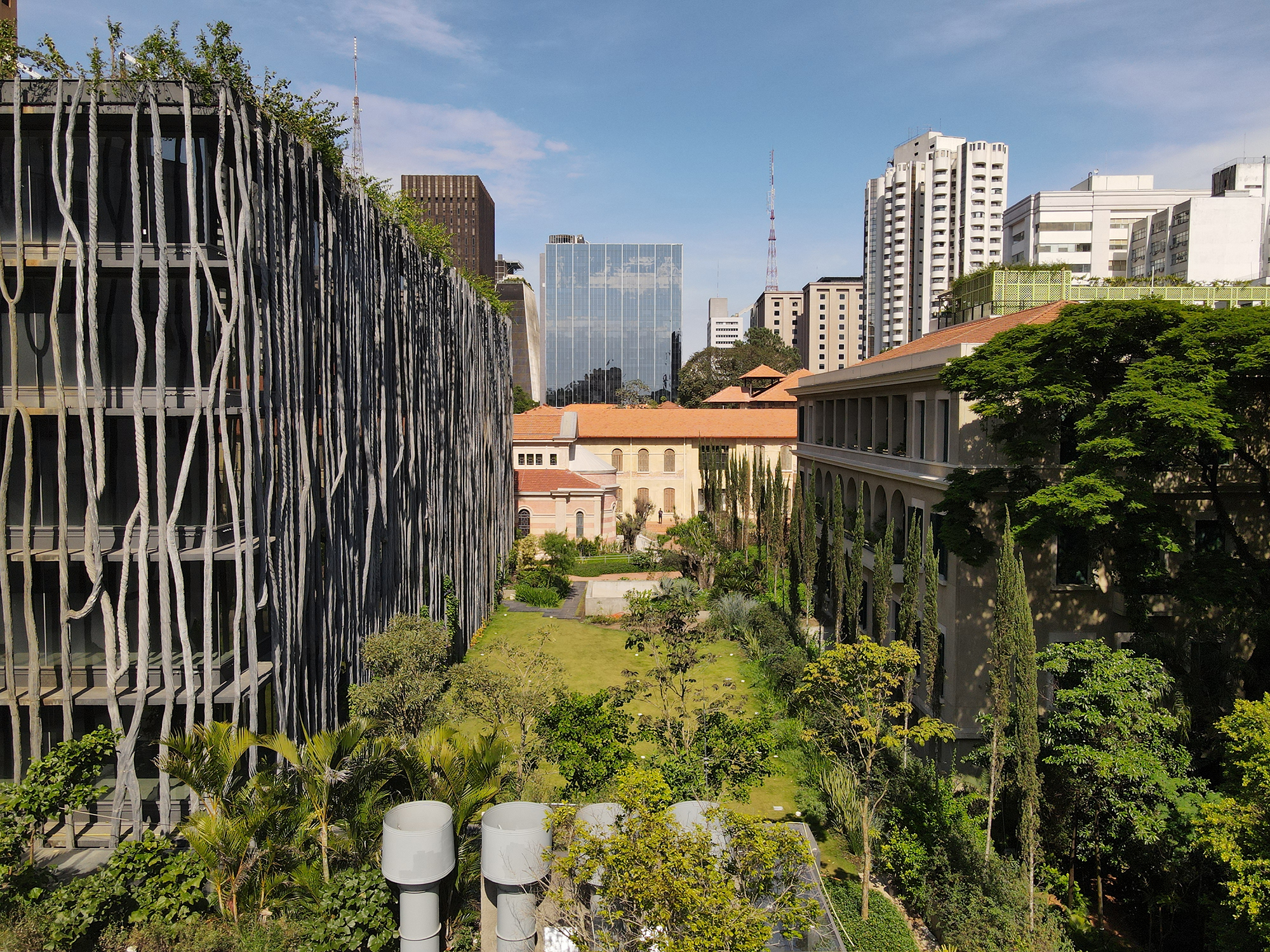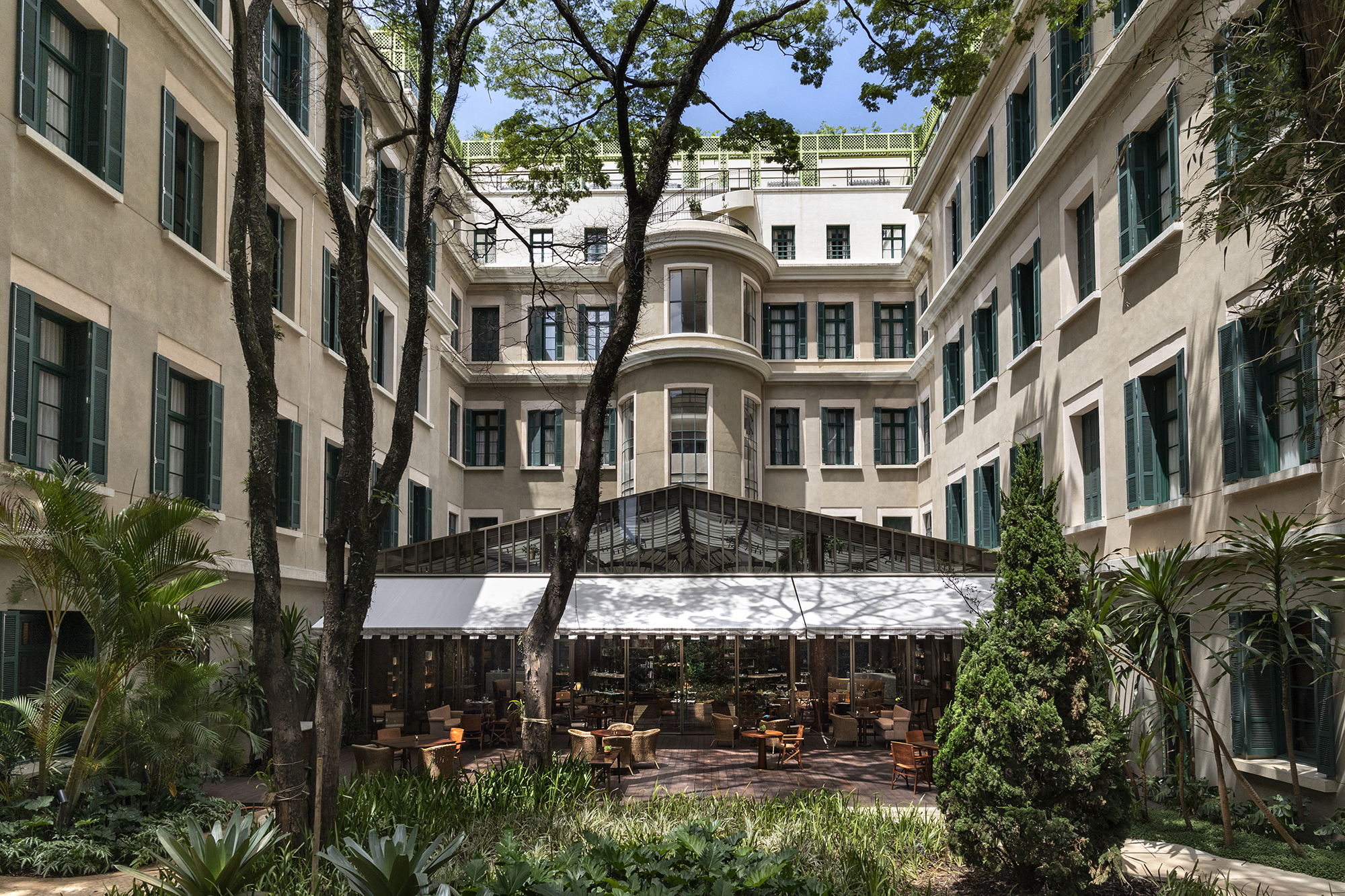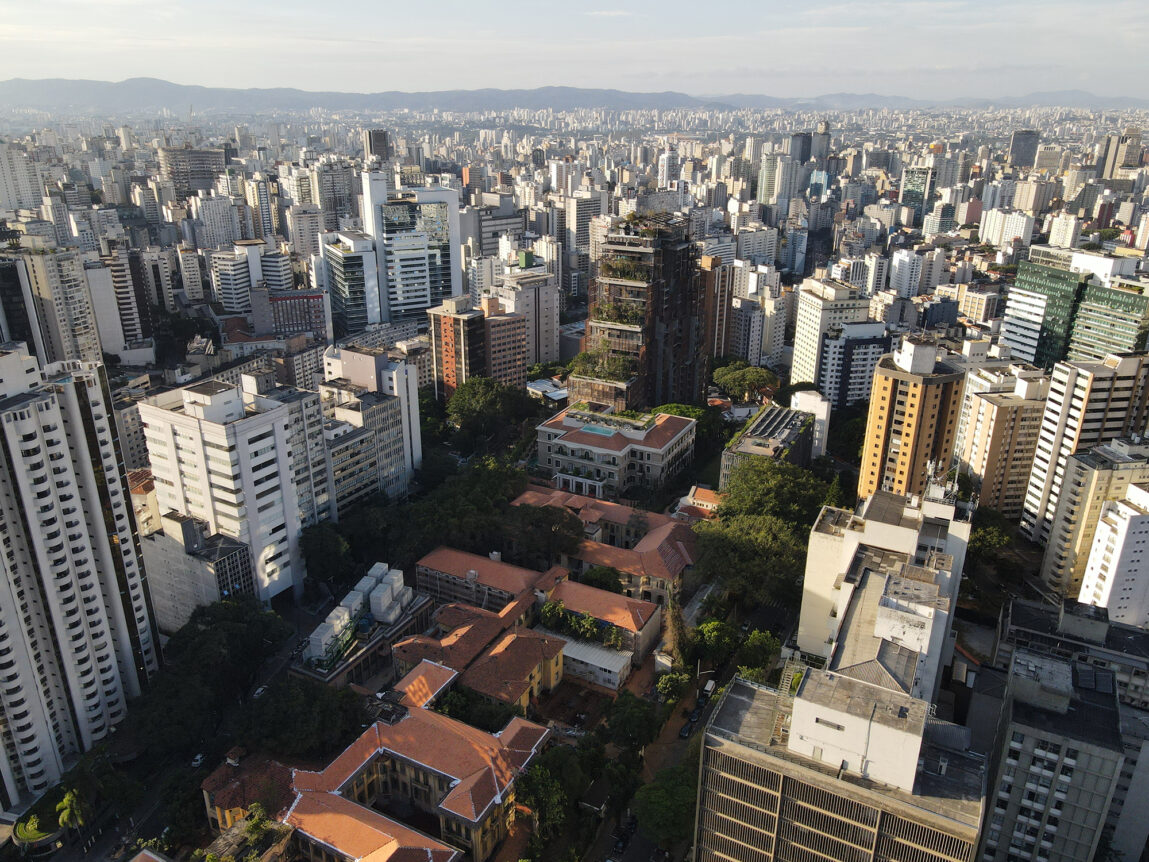São Paulo is not called the New York of South America without reason. In the heart of the mega-metropolis, the center of Brazil’s creative scene, a wide variety of cultures meet, giving it a certain progressiveness and internationality. Unlike New York, however, with its world-famous Central Park as the city’s green lung, the urban landscape of the Brazilian metropolis is characterized by far fewer green spaces. In the midst of what some would call a »concrete jungle«, however, is the Cidade Matarazzo, an impressively ambitious project that aims to raise environmental awareness in Brazil and actively contribute to the country’s transformation back to more forest and green spaces.
For the realization of the »Green City in the City« concept, the site of the abandoned Matarazzo Hospital was chosen, situated in a prime location near Avenida Paulista, one of the city’s most important boulevards. On a total of 45,000 square meters, 10,000 trees were planted, the existing hospital buildings were renovated and converted, and additional new buildings were also constructed to create a place of environmentally conscious well-being. Besides offices, apartments, restaurants and hotels, Cidade Matarazzo also includes cultural and conference centers, a campus and an organic supermarket. The project can claim to be Brazil’s largest monument restoration to date.


Mata Atlantic Tower by Jean Nouvel
The Cidade Matarazzo proves that ecological awareness and design standards are not necessarily mutually exclusive. The most striking building in the complex is probably the newly built Mata Atlantic Tower, a 32-story skyscraper designed by Pritzker Prize winner Jean Nouvel. With 200 trees up to 14 meters forming a vertical forest along the facade, the tower is not only an architectural work of art, but rather a political statement and a symbol of resistance against the destruction of nature, which has reached its sad climax in recent years under Bolsonaro. Rosewood Hotel São Paulo, one of the city’s most luxurious hotels, is located inside the vertical forest. None other than Philippe Starck is responsible for the interior design of the hotel, which includes Nouvel’s tower and a renovated villa that was formerly a maternity ward.
Starck’s signature is unmistakable, but in keeping with the project, it appears more nature-oriented than one is used to from him. This is probably due to the fact that Starck was encouraged by the inventor and founder of Cidade Matarazzo, Alexandre Allard, to work exclusively with Brazilian raw materials. Wood is omnipresent as a material, naturally deriving from sustainable and local cultivation. During the construction process it was already clear to keep the carbon footprint of the project as low as possible by avoiding long transport routes of materials.

A holistic concept
Cidade Matarazzo is not just about appearances, which is proven by the holistic approach in which the project was created. While star architects and innovation hubs generate the necessary public attention, it is the less obvious structures that significantly shape the project. What is not immediately apparent to visitors at first glance is that the entire facility is powered exclusively by renewable energy. Moreover, the company has invested in its own water reclamation system to save resources. In addition to a completely sustainable supply chain for the facility’s restaurants, a program has also been initiated to train farmers in organic farming and make them aware of the dangers of monoculture. In the near future, new sustainable methods and technologies will be tested and other farmers will be trained on a model farm belonging to Cidade Matarazzo. So there is no question of greenwashing in the luxury segment; Cidade Matarazzo is in fact a successful attempt to combine aesthetics, innovation, enjoyment and sustainability. [AD]


